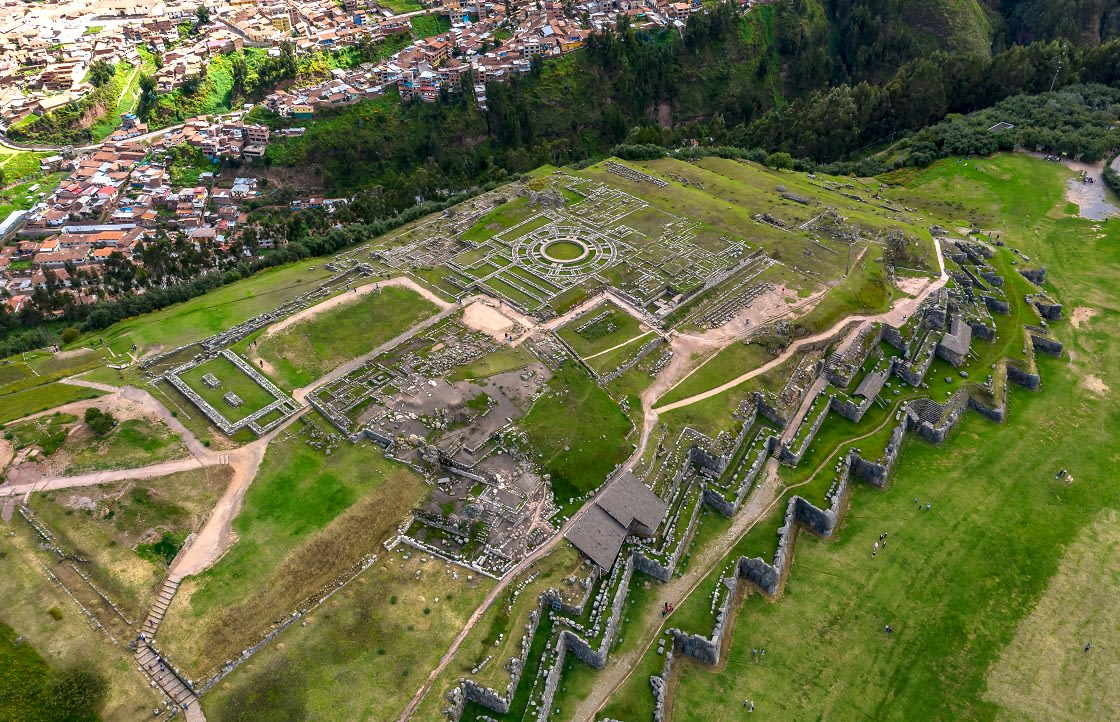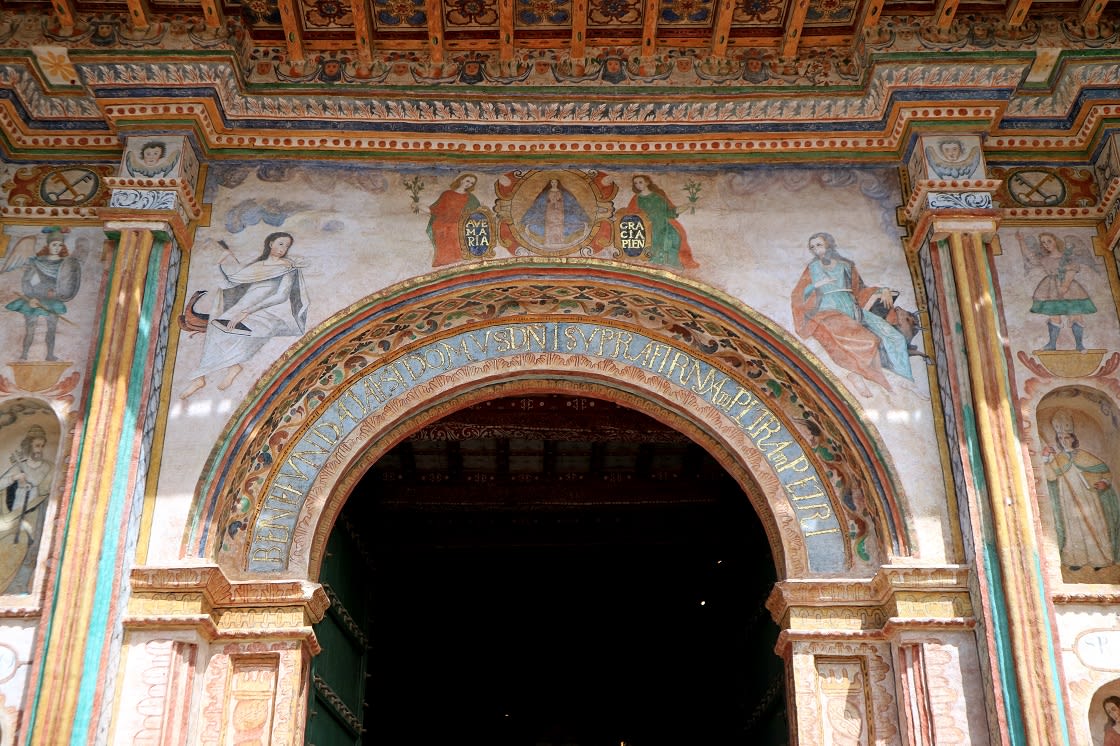
The city of Cusco, Peru is currently known as the cultural capital of the country, but its significant history goes back much further. As the oldest living city in the Americas, Cusco has been inhabited continuously for over 3,000 years. It was the historic capital of the Inca Empire from the 13th to 16th century until Spanish conquest, and now is a major tourist destination- receiving nearly 2 million visitors per year. So, if you’re headed to Peru, make sure to brush up on the history of Cusco before you go so you can begin to comprehend the role over time that it has played. Walking the ancient city streets and witnessing the sacred ruins won’t be the same afterwards! Read on for a brief history of the historic city of Cusco.

Ancient Walls At Pikillaqta, Dating Back To The Wari Culture
While there is still some debate on when the city of Cusco’s history began (and certainly much evidence we do not yet know of), evidence proves that it dates as far back as 1000 B.C. Organized life in Cusco city began when the Marcavalle Culture was the dominant power, sometime around this time. A population made up of farmers and shepherds, the city was precariously organized and mainly took up the eastern side of modern Cusco. Cusco’s second phase of habitation began around 800 B.C., when the Chapanata culture developed within the city. By 600 A.C., the Qotakalli culture was created: with it came the first established system of Regional States.
The Wari invaded Cusco in 750 A.D., moving in from the north of present-day Ayacucho. With their invasion, they constructed buildings and what is today known as Pikillaqta. Resultingly, the regional state of Killke was formed.
Prior to the arrival of the Incas, the area that is now Cusco was occupied by the Killke people from 900-1200 A.D. Evidence from the ruins of the walled complex of Saksaywaman, just above the city center of Cusco, show that the Killke people constructed it around 1100 (it is often described as an “Inca Ruin”; the Inca later expanded and occupied the complex starting in the 13th century). And then came the history of Cusco that we have all heard of…that of the Incas.

Aerial Top View Of The Inca Ruins Of Sacsayhuaman
Inca civilization began in Cusco around 1200 A.D., with the very first Inka: Manko Capaq and Mama Ocllo. Elaborating greatly on previous life in Cusco, the Incas built what we now know as Cusco city. It was divided into two sectors, the urin and hanan, each arranged to include two of the four provinces (also known as suyos, representing the northwest, northeast, southwest and southeast quarters).
While we know that the Incas built Cusco city, one of the biggest mysteries today is how. It is unknown how the large stones were gathered and transported to the site, or how they managed to build with techniques so far advanced for their time.
After this initial foundation of Cusco, the Inca city went into a second period of growth around 1400. Archaeological evidence suggests gradual growth before the rule of Pachacuti, however the Inca history of Cusco states that King Pachacuti led this expansive phase, the start of his transformation of Cusco from sleepy city-state to vast empire of Tawantinsuyu. Many believed the new layout of the city was planned as an effigy, distinctively in the shape of a puma, a sacred animal in Inca culture. The fortress of Saksaywaman formed the head, the plaza of Huacaypata the navel, and the converging Huatanay and Tullumayo Rivers as the tail.
Archaeologists have suggested this city plan was then replicated at various other sites throughout the Inca Empire.
In 1527, in the midst of civil war, the city fell to the sphere of Huascar after the death of Huayna Capac. Cusco was then captured by the generals of Atahualpa in the Battle of Quipaipan in April 1532, just 19 months before the Spanish Invasion.

Andahuaylillas Church, Known as the Sistine Chapel of America
The turning point in the history of Cusco was the transfer from Inca to Spanish rule. The first Spaniards arrived to the city on November 15th, 1533. On March 23rd 1534, Francisco Pizarro refounded Cusco for the Spanish King.
Pizarro ceremoniously made Manco Inca the new Peruvian leader. A long and bloody war against the Spanish conquistadores began, lasting until 1572 when Tupaq Amaru I, the last emperor of the Inca dynasty was defeated, captured and executed in the city’s main square. The Spanish subsequently destroyed the many remaining structures in the city of Cusco, leaving little more than the foundations of some (which they then used for building their own churches and buildings).
A rebellion led by Tupac Amaru II began in 1780, setting another significant precedent against the Spanish Regime. Betrayed, defeated and executed in the main square of Cusco, his actions did not go unnoticed. Mateo Pumacahua and the Angulo Brothers initiated another rebellion between 1814 and 1815.
After endless fighting against the Spanish and integral support from the rest of South America, Peru finally obtained its independence from Spain in 1821. By 1933, Cusco was declared the “Archaeological Capital of South America”, and in 1978 was declared a “Cultural Heritage of the World” during the 7th Convention of Majors from Great Worldwide Cities in Milan, Italy.
In 1983, UNESCO granted Cusco the title of “Cultural Heritage of the Humanity”, and Peru declared it the “Tourist Capital of Peru” and “Cultural Heritage of the Nation”.
Despite a long, and at times tragic, past, the events of Cusco’s history have come to make it endlessly fascinating in the present. With remnants of over 8 cultures (and likely more), every aspect of the city of Cusco is entrenched in history. From the blend of Inca and Spanish architecture to the ruins that date to pre-Inca times, the history of Cusco lives on in for every visitor to witness. Contact us for more information about our Cusco, Sacred Valley & Machu Picchu Tours.
While Rainforest Cruises aim to provide accurate and up-to-date information, we make no representations as to the accuracy or completeness of any information herein or found by following any link on this site. Rainforest Cruises cannot and will not accept responsibility for any omissions or inaccuracies, or for any consequences arising therefrom, including any losses, injuries, or damages resulting from the display or use of this information.




